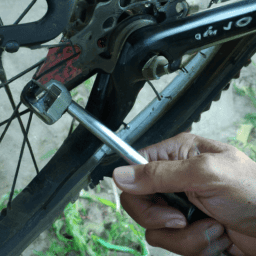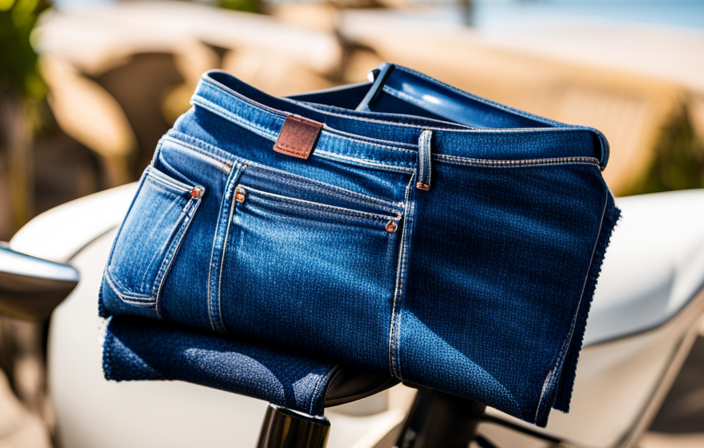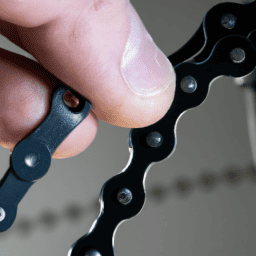Shifting gears on a bicycle once seemed like an intricate and intimidating process to me. Frequently, I’d have trouble selecting the appropriate gear or mistakenly shift excessively, causing a loss of momentum. Yet, with years of biking and ample practice under my belt, I’ve discovered that gear shifting is, in reality, straightforward and significantly enhances the cycling experience.
In this article, I will share with you the basics of gears and how to properly shift gears on a bicycle. Whether you’re a beginner or a seasoned cyclist, understanding how to shift gears can make a significant difference in your riding performance and overall enjoyment of cycling.
So, let’s dive in and learn how to shift a bicycle like a pro.
Key Takeaways
- Proper understanding and use of derailleurs is essential for effective gear shifting.
- Anticipating terrain ahead and shifting proactively can lead to smooth and safe gear shifting.
- Maintaining proper hand positioning and avoiding shifting under heavy load can prevent accidents and damage to the bike.
- Regular gear maintenance and fine-tuning of the derailleur can improve gear shifting and make cycling more efficient and enjoyable.
Understanding the Basics of Gears
Get ready to feel like a pro when you understand how gears work on your bike! Gears are the key to making your cycling experience more efficient and enjoyable. By changing the gear ratio, you can make it easier or harder to pedal, depending on the terrain and your fitness level.
The derailleurs functioning on your bike are responsible for shifting gears. They move the chain from one gear to another by pushing it sideways. The chain then moves to a different sized gear, making it easier or harder to pedal.
Understanding how to use the derailleurs correctly is essential for a smooth and efficient ride. Now, let’s dive into how to shift gears on a bicycle.
How to Shift Gears on a Bicycle
As you pedal down the road, it’s crucial to smoothly transition between gears to maintain your momentum and avoid losing control. Proper hand positioning is essential when shifting gears on a bicycle. The right hand controls the rear derailleur, which shifts the chain between gears on the rear cassette, while the left hand controls the front derailleur, which shifts the chain between the chainrings on the crankset.
When shifting gears, it’s important to anticipate the terrain ahead and shift accordingly. If you’re approaching a hill or incline, you’ll want to shift to a lower gear to make pedaling easier. Conversely, if you’re on a flat or downhill section, you’ll want to shift to a higher gear to maintain your speed. It’s also important to avoid shifting under heavy load, such as when pedaling uphill, as this can cause damage to the chain and derailleur.
Knowing when to shift and having proper hand positioning will make shifting gears on a bicycle a much smoother and efficient process.
Transitioning between gears on a bicycle can be a bit tricky at first, but with practice and experience, it becomes second nature. In the next section, we’ll discuss some tips and tricks for shifting gears that’ll help you become more proficient and confident on your bicycle.
Tips and Tricks for Shifting Gears
Improving your gear shifting skills on a bike involves developing a feel for the terrain and the bike’s capabilities, so you can anticipate the right time to adjust your gears. Here are some tips and tricks that will help you shift gears like a pro:
-
Proper gear maintenance is key to smooth shifting. Make sure your chain is clean and lubricated, and keep your derailleur and cassette clean and free of debris. Dirty or worn components can cause slipping and misalignment, leading to poor gear shifting performance.
-
Adjusting derailleur tension can also improve your gear shifting. If your chain is skipping or jumping gears, your derailleur may need to be fine-tuned. Use the barrel adjuster on your derailleur to make small adjustments until your shifting is smooth and precise.
-
Anticipate the terrain ahead and shift proactively. If you know you’re about to encounter a steep hill, shift down to a lower gear before you start climbing. Similarly, if you’re approaching a downhill section, shift up to a higher gear to maintain your speed and momentum.
-
Finally, practice makes perfect. Take the time to get to know your bike and experiment with shifting in different conditions. The more you ride, the more comfortable you’ll become with shifting gears, and the smoother and more efficient your rides will be.
With these tips in mind, you’ll be well on your way to mastering the art of shifting gears on a bike.
In the next section, we’ll explore some common gear shifting mistakes to avoid, so you can stay safe and get the most out of your rides.
Common Gear Shifting Mistakes to Avoid
Mistakes can be costly while riding a bike, and avoiding them is crucial for a smooth and safe ride. When it comes to shifting gears, there are some common mistakes that riders make that can affect their performance. One of the most important things to keep in mind is proper hand positioning. Riders should keep their hands on the handlebars and use their fingers to shift, rather than moving their entire hand. This allows for better control and helps prevent accidents.
Another mistake to avoid is failing to anticipate terrain changes. Riders should shift to a lower gear before they encounter a hill or other difficult terrain. This helps keep the bike moving smoothly and reduces the risk of getting stuck or falling. Additionally, riders should avoid shifting under heavy load, as this can cause damage to the gears. By taking the time to learn proper shifting technique and avoiding these common mistakes, riders can enjoy a safe and comfortable ride.
| Mistake | Why it’s a problem | How to avoid |
|---|---|---|
| Shifting too late | Can cause the chain to jump or the rider to lose balance. | Anticipate terrain changes and shift to a lower gear before it gets too difficult. |
| Improper hand positioning | Can lead to loss of control or accidents. | Keep hands on the handlebars and use fingers to shift. |
| Shifting under heavy load | Can damage the gears and cause the chain to slip. | Shift before applying too much pressure to the pedals. |
| Not shifting enough | Can cause unnecessary strain on the rider and make the ride more difficult. | Shift to a higher gear when the rider is able to maintain a steady pace. |
Frequently Asked Questions
What is the best way to shift gears on a steep incline?
When tackling steep inclines on my bike, I found that proper technique for gear shifting is crucial. I recommend anticipating the incline, downshifting before it becomes too steep, and maintaining a consistent cadence to avoid burning out. Tips for uphill cycling also include using your body weight to your advantage and staying focused on the climb.
Can I use WD-40 to lubricate the gears on my bicycle?
I’ve used WD-40 for bike maintenance before, but it’s not recommended for bike gears. While it can clean and lubricate, it can also attract dirt and grime, causing more damage in the long run. Stick to bike-specific lubricants for your gears.
What is the difference between a freewheel and a cassette?
Did you know that 90% of modern bikes use cassettes instead of freewheels? The main difference is that cassettes are more versatile, allowing riders to easily change gear ratios. When choosing the right drivetrain for your riding style, consider the pros and cons of each.
How often should I replace my bike’s gear cables?
Based on my experience with bike maintenance, I recommend replacing gear cables every 1-2 years. Cable lifespan can vary based on usage and weather conditions, but regular replacement can ensure smooth shifting and prevent cable wear and tear.
Is it possible to shift gears without using the bike’s shifters?
Yes, alternative shifting methods exist, such as manually adjusting the gears by pushing the chain onto the desired sprocket. This requires practice and finesse, but can be useful in emergency situations or if a shifter fails.
Conclusion
In conclusion, shifting gears on a bicycle is a skill that takes practice and patience to master. Understanding the basics of gears and how they work is crucial in achieving a smooth and efficient ride.
When shifting gears, it’s important to anticipate the terrain ahead and adjust accordingly. By using the right gear at the right time, you can make your ride more enjoyable and less strenuous on your body.
Just like how a musician tunes their instrument before a performance, a cyclist must also tune their gears before a ride. By finding that sweet spot in your pedal stroke and shifting gears to match the terrain, you can create a symphony of movement between yourself and your bike.
Remember to stay focused, stay calm, and stay in control of your ride. With enough practice and determination, you’ll be shifting gears like a pro in no time.









